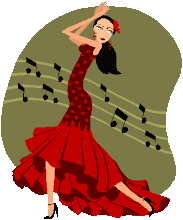Web 2.0 can be described as the next generation of the Internet as a social network. Web 1.0 has allowed users to get information by going directly to the source, such as, Microsoft.com for Windows issues and CNN.com for news. (Web 2.0 for Designers, 2008) However, as times have changed and the number of web users has increased, more people started writing their own content in addition to reading information on the web. To keep up with the demands, Web 2.0 was created to provide a new set of tools to combine and remix micro content in new and useful ways.
According to Wikipedia, “Web 2.0 is a trend in the use of World Wide Web technology and web design that aims to facilitate creativity, information sharing, and, most notably, collaboration among users.” These concepts have led to the development and evolution of web-based communities and hosted services, such as social-networking sites, wikis, blogs, and folksonomies (collaborative tagging, social classification, social indexing, and social tagging). (Web 2.0, 2008)
After the first Tim O’Reilly Media Web 2.0 conference held in 2004, Web 2.0 became notable. “The concept of "Web 2.0" began with a conference brainstorming session between O'Reilly and MediaLive International Dale Dougherty, web pioneer and O'Reilly VP, noted that far from having "crashed", the web was more important than ever, with exciting new applications and sites popping up with surprising regularity.” (O’Reilly, 2008) Web 2.0 changes the ways software developers and end-users use the web. For more information on O’Reilly’s article, What is Web 2.0 Design Patterns and Business Models for the Next Generation of Software, visit the site http://www.oreillynet.com/lpt/a/6228 .
Web 2.0 allows easy access and display of information such as blogs, pictures, and newsgroups. Users can share and publish content, communicate with others and select a specific group to communicate through a variety of online applications. Here are examples of Web 2.0 applications, which I have described utilizing eleven verbs, such as access, collaborate, communicate, create, edit, explore, insert, organize, receive, search and share.
Web 2.0 allows us to:
Web 2.0 allows us to:
- Access information, such as scholarly articles, media clips, or photos from the World Wide Web by using a search engine, such as Google.com. Here is the link to Google.com visit http://www.google.com/
- Collaborate with a group on a project by using http://documents.google.com/ . For more information on Google Doc visit: Google Doc in Plain English at http://youtube.com/watch?v=eRqUE6IHTEA
- Communicate with a group on specific topics, such as health or healthy recipes on the World Wide Web by visiting different sites such as http://www.groups.google.com/ or communicate with others by visiting different web sites and blogs, which is a great opportunity to network and exchange ideas.
- Create a web site or web page by using tools such as Microsoft Popfly Mashup (a web application that combines data from more than one source into a single integrated tool) to display your ideas in a creative way or create a Myspace.com or Facebook.com webpage to keep in touch with friends and network with others. Here is an example of my Microsoft Popfly Mashup called Shakira: http://tinyurl.com/5qc9hr For more information on Mashup visit: http://en.wikipedia.org/wiki/Mashup_(web_application_hybrid) Visit my MySpace site AngelMaribella: http://www.myspace.com/angelmaribella and my Facebook site: http://www.facebook.com/profile.php?id=1189977401 . To communicate with others on Facebook, create an account by visiting http://www.facebook.com/ or create a blog to share your ideas or views on a topic by creating an account at http://www.blogspot.com/ .
- Edit information in a Wiki page or create a Wiki page by visiting http://www.wikipage.com/
- Explore the Virtual World and enter into Second Life by visiting http://www.secondlife.com/ , change your name, appearance, and visit other people (avatars) from other countries, interests, educational purposes or businesses. Here is a link that describes my experience: http://tinyurl.com/5t5b4a
- Insert your photos or tag photos from others online using a tool application named Flickr and display and share with others. Click here to visit my Flickr site: http://www.flickr.com/photos/angelmaribella
- Organize information received from others within your group to edit, track and make changes keeping group project/document centralized for your group to access and provide comments by using Google doc visit http://documents.google.com/ .
- Receive updated information on topics that interest you by subscribing to web sites by using Really Simple Syndication (RSS). Visit my RSS blog for more information on What is RSS: http://tinyurl.com/4zl7b3 .
- Search for educational articles or information by using a search engine such as Google or ASU Ref Works to organize and save articles, journals and other information to complete research papers or to share with your colleagues. Also, search for video clips on different topics, such as educational topics by visiting http://www.youtube.com/ .
- Share your project or photos by creating and designing your webpage at http://www.googlepages.com/ . Here is my link titled: “Pugs and Kisses” I hope you enjoy http://angelmaribella.googlepages.com/home .
For more information on Web 2.0 visit Web 2.0 for dummies visit http://codeclimber.net.nz/archive/2007/04/02/Web-2.0-for-dummies.aspx
Works Cited
MacManus, R. and Porter, J. May 4, 2005. Digital Web Magazine: Web 2.0 for Designers. Retrieved April 24, 2008 from http://www.digital-web.com/articles/web_2_for_designersO’Reilly, T. September 30, 2005. What is Web 2.0: Design Patterns and Business Models for the Next Generation of Software. Retrieved April 24, 2008, from http://www.oreilly.com/pub/a/oreilly/tim/news/2005/09/30/what-is-web-20.html
“Web 2.0 for dummies” Retrieved April 24, 2008 from http://codeclimber.net.nz/archive/2007/04/02/Web-2.0-for-dummies.aspx
Web 2.0. (2008) Wikipedia. Retrieved on April 24, 2008, from http://en.wikipedia.org/wiki/Web_2




